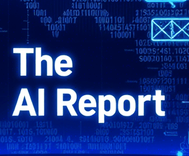Artificial intelligence project to aid Chesapeake Bay oyster farmers

The AI Report
Daily AI, ML, LLM and agents news
For generations, Chesapeake Bay oyster farmers have relied on intuition and time-honored, often manual, methods to cultivate their valuable harvest. Picture a farmer on the water, dropping a bamboo pole, feeling the seabed to locate prime spots for seeding young oysters. This tradition, while rich in history, masks an inherent inefficiency in a modern world demanding precision and sustainability. How can we empower these stewards of the Bay to work smarter, not just harder, and ensure a thriving future for both their livelihoods and the ecosystem?
Revolutionizing Oyster Farming with AI
The answer lies beneath the surface, illuminated by a groundbreaking initiative at the University of Maryland’s A. James Clark School of Engineering. Researchers are pioneering an artificial intelligence (AI) system designed to transform traditional oyster farming into a data-driven, highly efficient operation. This project bridges the gap between centuries-old practices and cutting-edge technology, offering a new lens through which to understand the hidden world of oyster beds.
Unveiling the Underwater Landscape
At its core, this AI system integrates murky underwater video with sonar technology. While sonar has long been used to locate larger objects, identifying individual oysters and assessing seabed conditions demands a more sophisticated approach. The AI is trained to interpret these combined data streams, delivering remarkably detailed insights:
- Seabed Quality Assessment: Precisely identifies suitable substrate for oyster spat.
- Oyster Growth and Maturity: Monitors the development of oysters, tracking their size and health.
- Live vs. Dead Distinction: Accurately differentiates between live and deceased oysters, providing crucial data for bed management.
As Professor Miao Yu, the project's principal investigator, points out, farmers currently "don’t know the condition of their oyster beds or the seabed conditions" when dredging. This AI removes that significant blind spot, replacing guesswork with scientific certainty.
Actionable Intelligence for Sustainable Growth
Imagine accessing real-time, precise information about your oyster farm directly from your phone. That’s the practical benefit this technology promises. The ultimate vision is a mobile application offering GPS-guided directions:
- Optimized Seeding: Pinpoint ideal locations for seeding new oysters, maximizing spat survival and growth.
- Efficient Harvesting: Direct farmers to the most mature oyster beds within their leased tracts, reducing wasted effort and increasing yield.
This approach democratizes access to advanced technology, as individual farmers won’t bear the full cost of sophisticated AI and sonar systems. Instead, they leverage a shared, systematic monitoring network, funded in part by a $10 million grant from the U.S. Department of Agriculture, aimed at modernizing sustainable shellfish farming.
Beyond Profit: Cultivating a Healthier Bay
The impact of this innovation extends far beyond individual farm profitability. Oysters are a keystone species in the Chesapeake Bay, performing vital ecological services like filtering water and creating essential habitats for marine life. By enabling farmers to manage their leased tracts with unprecedented efficiency, the AI system indirectly supports broader conservation efforts.
Improved farming practices can lead to healthier, more productive oyster populations. This, in turn, amplifies the oysters' natural ability to enhance water quality and support biodiversity throughout the Bay, including designated restoration sanctuaries. It's a powerful synergy where economic viability and environmental stewardship reinforce each other.
The Future of Aquaculture: Intelligence Meets Ecosystem
The University of Maryland’s pioneering work serves as a powerful testament to how artificial intelligence can empower traditional industries and safeguard critical natural resources. This isn't just about farming; it's about fostering resilience, optimizing coexistence, and charting a course for sustainable food production that benefits both human enterprise and the planet. As technology continues to evolve, our ability to understand, manage, and protect delicate ecosystems grows stronger. What opportunities might intelligent systems unlock in other sectors critical to our planet's health?

The AI Report
Author bio: Daily AI, ML, LLM and agents news
